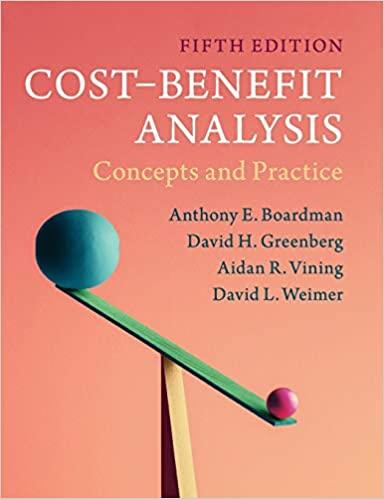







Required Information (The following information applies to the questions displayed below.) Warnerwoods Company uses a perpetual Inventory system. It entered into the following purchases and sales transactions for March. Units Sold at Retail Date Activities Mar. 1 Beginning inventory Mar. 5 Purchase Mar. 9 Sales Mar. 18 Purchase Mar. 25 Purchase Mar. 29 Sales Totals Units Acquired at Cost 70 units @ $50.48 per unit 210 units@ $55.48 per unit 70 units@ $60.48 per unit 120 units @ $62.40 per unit 238 units @ $85.48 per unit 180 units @ $95.40 per unit 330 units 470 units Required: 1. Compute cost of goods available for sale and the number of units available for sale. Cost of Goods Available for Sale Cost per Cost of Goods # of units Unit Available for Sale Beginning inventory Purchases: March 5 March 18 March 25 Total 2. Compute the number of units In ending Inventory. Ending inventory units 3. Compute the cost assigned to ending Inventory using (a) FIFO, (b) LIFO, (C) weighted average, and (d) specific Identification. For specific identification, the March 9 sale consisted of 50 units from beginning Inventory and 180 units from the March 5 purchase; the March 29 sale consisted of 30 units from the March 18 purchase and 70 units from the March 25 purchase. Complete this question by entering your answers in the tabs below. Perpetual FIFO Perpetual LIFO Weighted Average Specific Id Compute the cost assigned to ending inventory using FIFO. Perpetual FIFO: Goods Purchased Cost of Goods Sold Inventory Balance Date # of units Cost per # of units sold Cost per cost of Goods Sold unit # of units Cost per unit unit Inventory Balance $ 3,528.00 March 1 70 m $ 50.40 March 5 March 9 March 18 March 25 March 29 Totals S 0.00 3. Compute the cost assigned to ending Inventory using (a) FIFO, (b) LIFO. (c) weighted average, and (d) specific Identification. For specific Identification, the March 9 sale consisted of 50 units from beginning inventory and 180 units from the March 5 purchase; the March 29 sale consisted of 30 units from the March 18 purchase and 70 units from the March 25 purchase. Complete this question by entering your answers in the tabs below. Perpetual FIFO Perpetual LIFO Weighted Average Specific id Compute the cost assigned to ending inventory using LIFO. Perpetual LIFO: Cost of Goods Sold Goods Purchased # of Cost per units unit # of units sold Date Cost per unit Cost of Goods Sold Inventory Balance Cost per Inventory # of units unit Balance $ 50.40 = s 3.528.00 March 1 70 March 5 March 9 March 18 March 25 March 20 Totals s 0.00 3. Compute the cost assigned to ending Inventory using (a) FIFO, (b) LIFO, (C) weighted average, and (d) specific Identification. For specific identification, the March 9 sale consisted of 50 units from beginning Inventory and 180 units from the March 5 purchase; the March 29 sale consisted of 30 units from the March 18 purchase and 70 units from the March 25 purchase. Complete this question by entering your answers in the tabs below. Perpetual FIFO Perpetual LIFO Weighted Average Specific Id Compute the cost assigned to ending inventory using weighted average. (Round your average cost per unit to 2 decimal places.) Weighted Average Perpetual: Goods Purchased Cost of Goods Sold Inventory Balance # of # of units Cost per Cost of Goods Cost per Date units unit sold unit Sold # of units unit Inventory Balance March 1 70 @ $ 50.40 = s 3.528.00 Cost per March 5 Average March 9 March 18 Average March 25 March 29 Totals S 0.00 3. Compute the cost assigned to ending Inventory using (a) FIFO, (b) LIFO. (C) weighted average, and (d) specific Identification. For specific Identification, the March 9 sale consisted of 50 units from beginning Inventory and 180 units from the March 5 purchase, the March 29 sale consisted of 30 units from the March 18 purchase and 70 units from the March 25 purchase. Complete this question by entering your answers in the tabs below. Perpetual FIFO Perpetual LIFO Weighted Average Specific Id Compute the cost assigned to ending inventory using specific identification. For specific identification, the March 9 sale consisted and 180 units from the March 5 purchase; the March 29 sale consisted of 30 units from the March 18 purchase and 70 units from Specific Identification: Goods Purchased # of Cost per Date units unit March 1 Cost of Goods Sold # of units Cost per Cost of Goods sold unit Sold Inventory Balance # of units Cost per unit Inventory Balance 70 @ $ 50.40 = s 3.528.00 March 5 March 9 March 18 March 25 March 29 Totals $ 0.00














